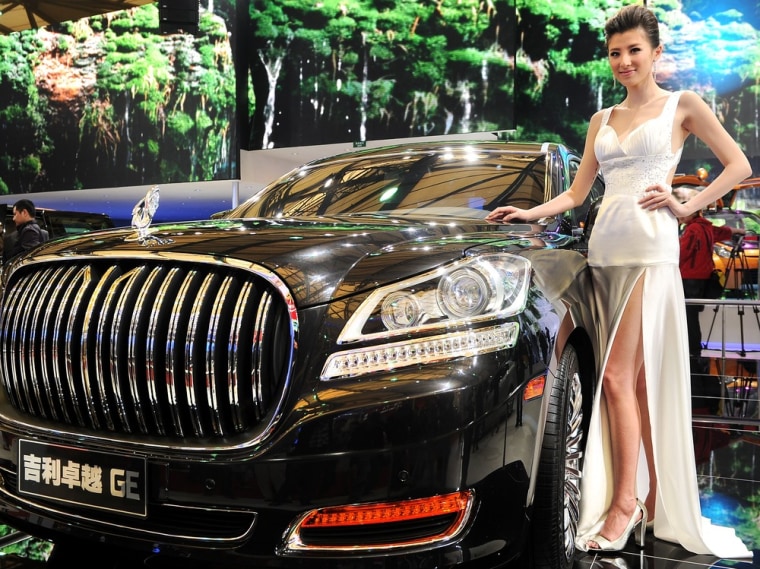More than a million potential car buyers are expected to stream through the turnstiles at Manhattan’s cavernous Jacob Javits Convention Center in the coming days as the 2011 New York International Auto Show gets underway.
The site of the first U.S. auto show and still the largest from an attendance standpoint, the New York auto show will be closely-watched by industry observers this year. Analysts have long recognized a link between auto show attendance and car sales, which are just beginning to revive after one of the worst recessions in American automotive history.
But industry leaders are also keeping a close eye on an event happening halfway around the world. Shanghai, China, is holding its own show this week. Although it’s significantly newer than the long-running Big Apple event, the Chinese show could add even more momentum in a car market that didn’t seem to even notice the global automotive downturn of 2008-2009.
Shanghai’s car show is held at a convention center that until only recently was nothing more than a collection of rice paddies. The sprawling facility is in Pudong, on the newly-developed side of the city that also houses some of the Asian nation’s biggest auto manufacturing facilities, including one where General Motors builds the Buick brand, a hot seller in the country.
Buick was just one of many automakers displaying its wares at the 2011 Shanghai event. Scores of domestic carmakers — all hoping to survive an anticipated market shake-out — were vying for attention along with the global brands that currently dominate the Chinese market.
In a curious quirk of Chinese and Western calendars, both the Shanghai and New York car shows have overlapped due to local holidays. That has meant companies like General Motors, Volkswagen and Ford faced a serious conundrum this year: Where to send their senior executives and their newest products?
Until now, the decision would have been obvious. But things have changed significantly since the last Shanghai car show two years ago (the event alternates with Beijing in odd and even years).
China is now the world’s largest car market, posting growth figures that the rest of the industrialized world can only dream of. Although sales declined last year (falling from 2009’s 46 percent rate to “just” 32 percent) they still hit a global record of 18 million. And few doubt that a new record will be reached in 2011.
The sense of energy in the Chinese car market has been palpable at the Shanghai convention center this year.
“This is the most exciting auto show I’ve ever been to,” said Jim Farley, the Ford executive in charge of the automaker’s global marketing effort.
Farley drew China duty while Ford’s President of the Americas, Mark Fields, and global product czar Derrick Kuzak, flew in to attend the New York show.
Showing how important the China show has become to other large carmakers, Dieter Zetsche, Daimler’s CEO and the brand boss of Mercedes-Benz, also traveled to Shanghai, leaving his second-in-command, Dr. Joachim Schmidt, to handle the automaker’s New York news conference.
It was only a few years ago that BMW surprised the car industry by unveiling its all-new CS luxury car in Shanghai rather than at a Western auto show. This year, there were plenty of global introductions in China.
Tellingly, GM’s Chevrolet division held the global launch of the all-new Malibu in Shanghai, but Chevy then repeated the event, a couple days later, in New York. The decision to begin in China reflects Chevy’s increasingly global focus — and the fact that the new version of the midsize sedan will go on sale in over 100 car markets worldwide, compared with just 20 for the old Malibu.
Volkswagen took a Solomonic approach, staging a three-city reveal of the next-generation Beetle in Shanghai, New York and Berlin.
Indeed, a number of carmakers tried to avoid playing favorites, staging dual car previews — no easy task considering the significant cost of preparing two prototype vehicles, since there was no time to move products from Shanghai to New York.
In terms of raw numbers, it appears that Shanghai will boast the bigger introduction count. Final numbers aren’t available yet, but preliminary estimates suggest the Shanghai show would see the launch of more than 100 battery vehicles alone, most of them carrying local Chinese brand names.
Even so, New York didn’t fare too badly. Show organizers listed more than 50 global or North American introductions — that’s more than the Javits Center has seen in several years. The introduction count underscores the idea that the U.S. car market may no longer be the industry leader, but in terms of raw numbers it still packs tremendous influence.
“Trends start in the U.S. and are copied elsewhere,” noted Klaus Bischoff, the lead designer for the Volkswagen brand who handled duties at the New York launch of the Beetle.
Organizers of the two shows have, in fact, declared something of a truce. They recently met — in neutral Switzerland, appropriately enough — to work out a strategy for the years ahead, agreeing not to overlap in future years.
